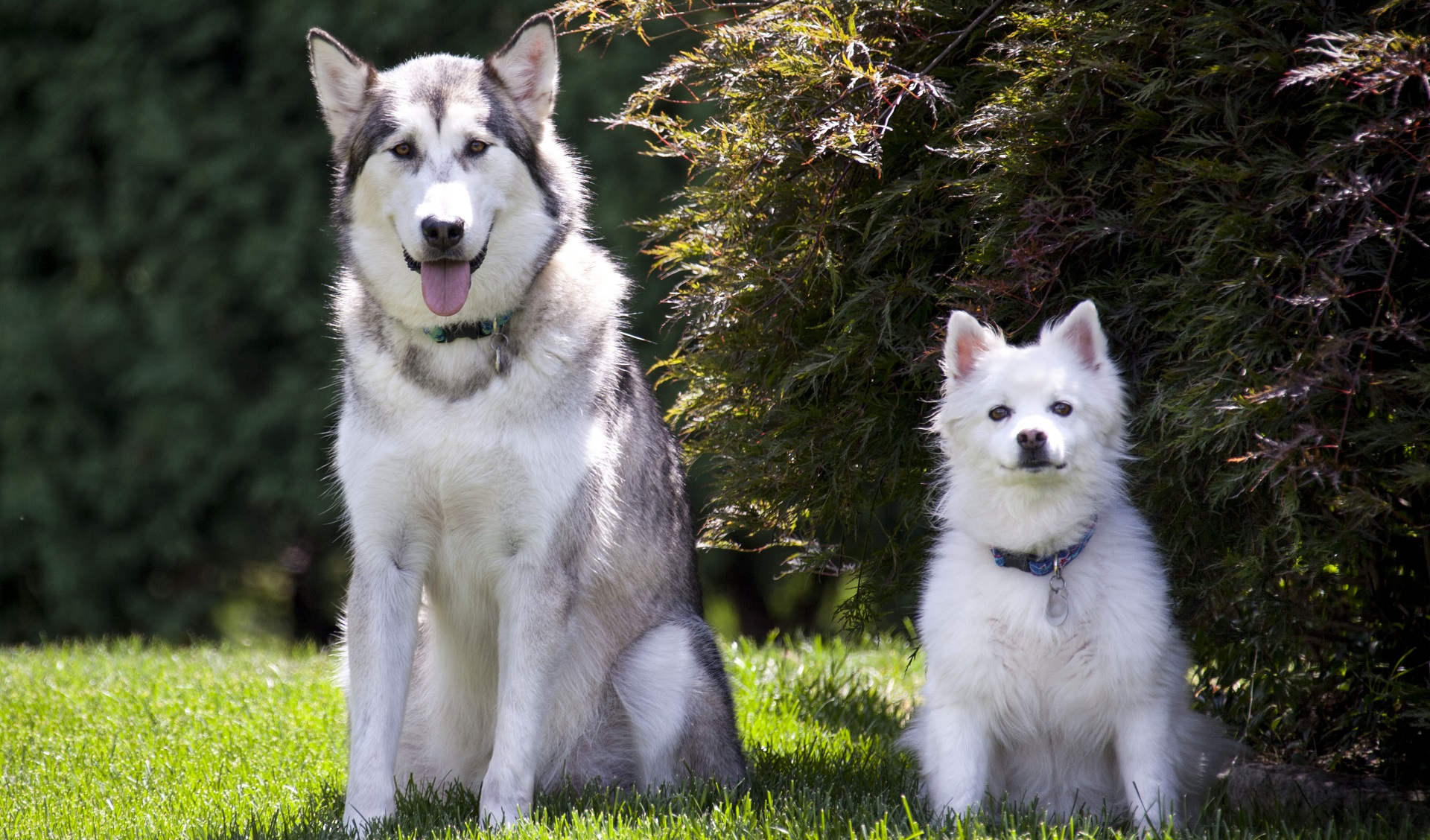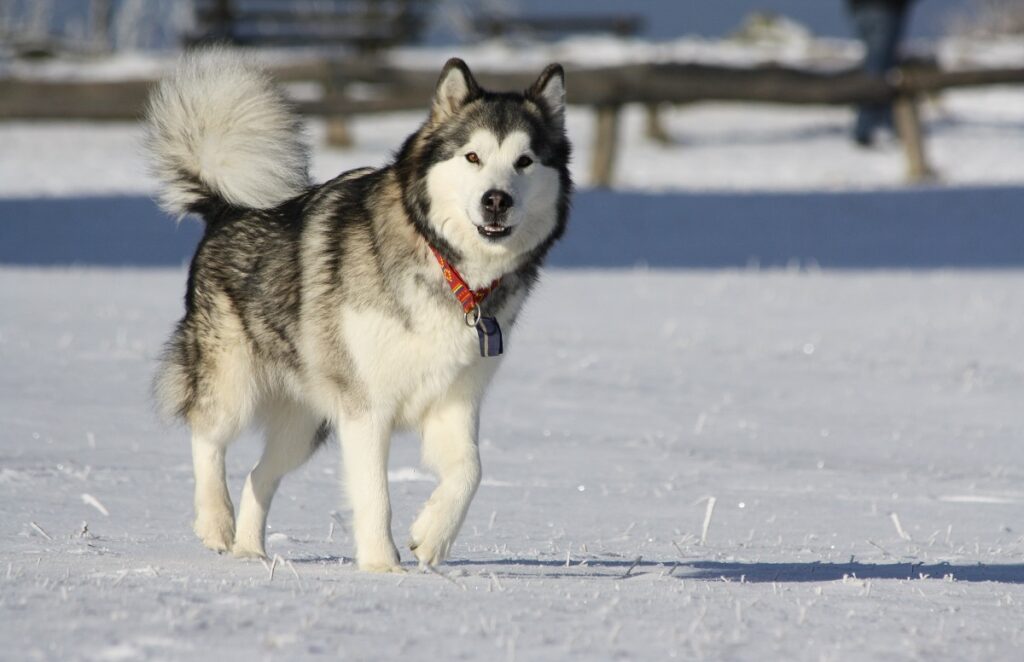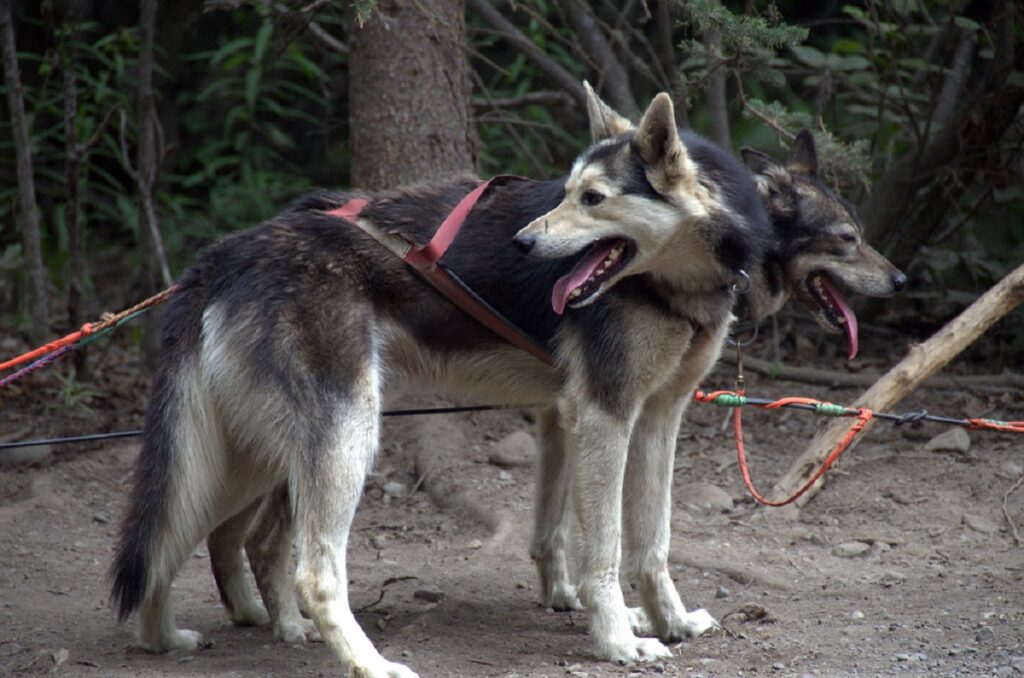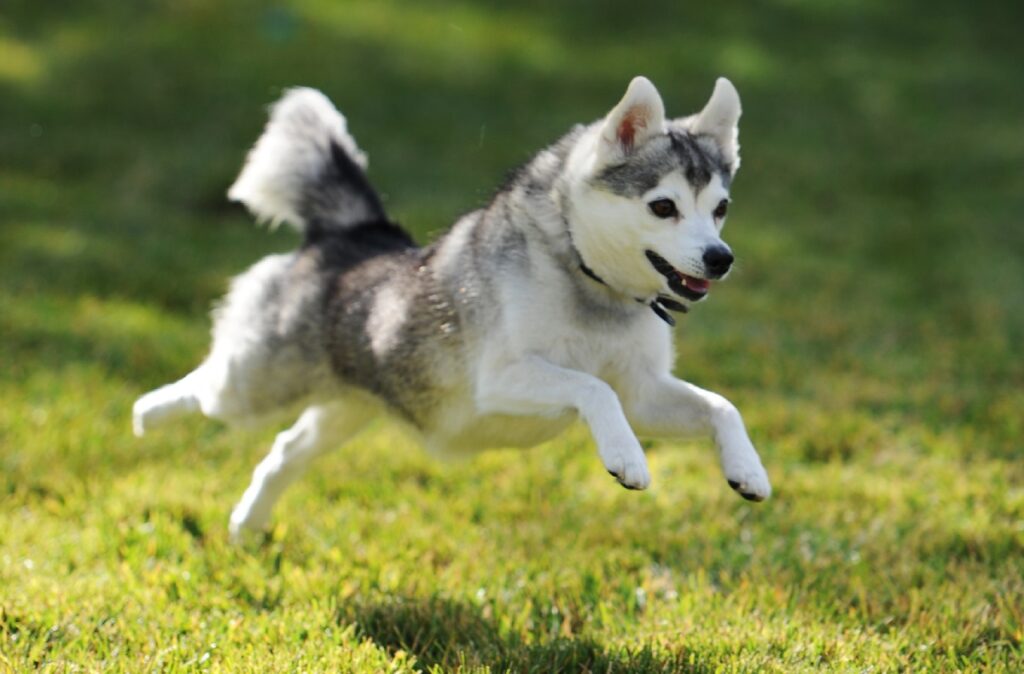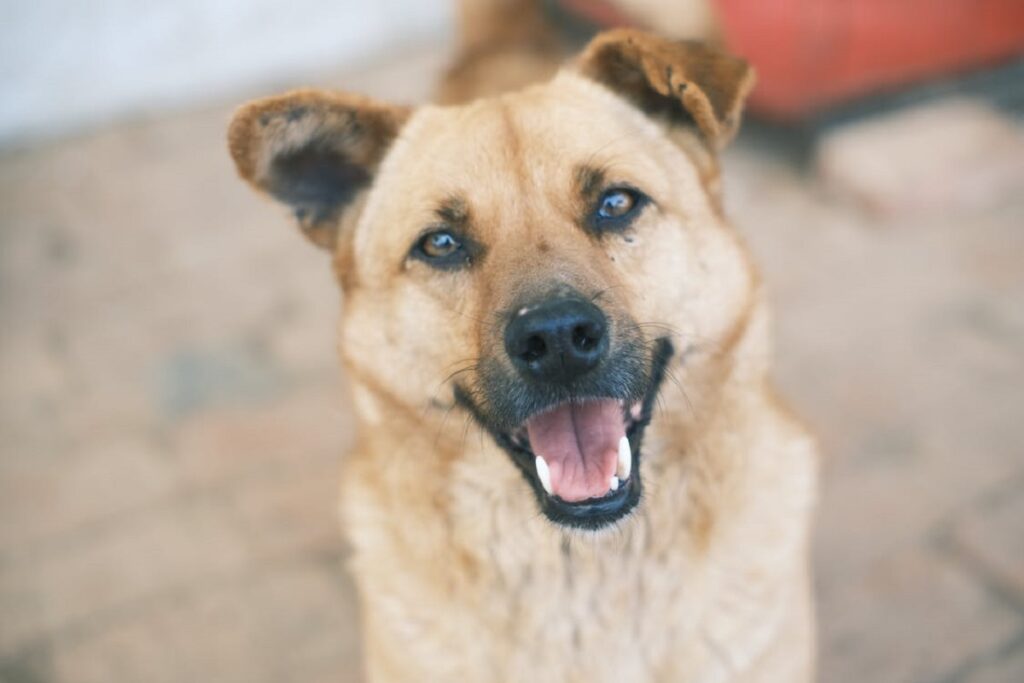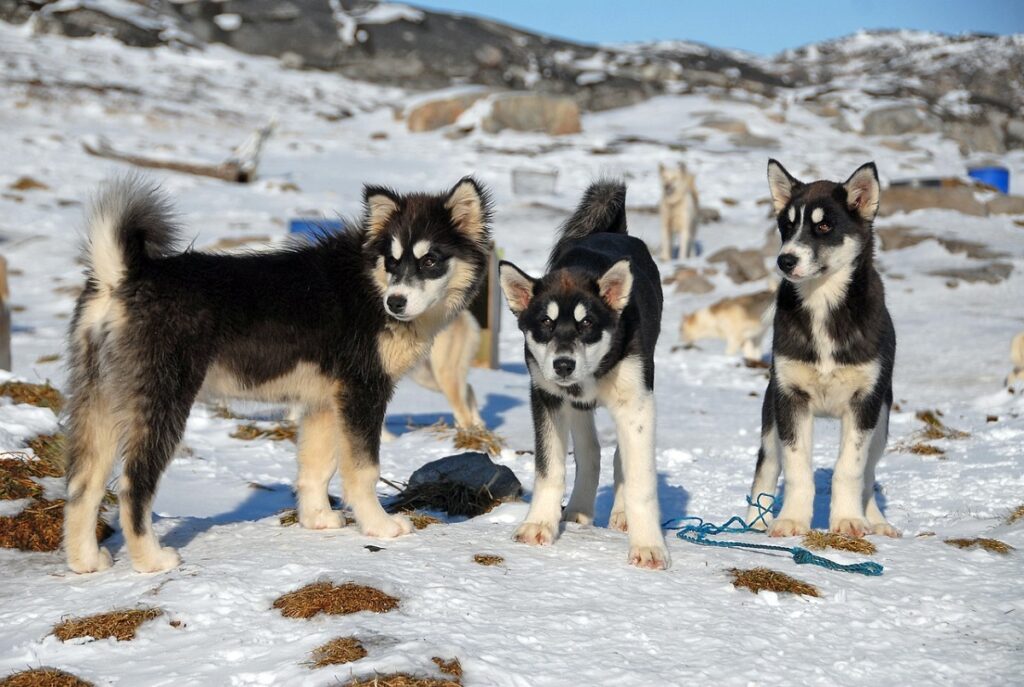Alaska, a land of snow and ice, forged some of the most resilient and powerful dog breeds. Built for endurance and challenging terrains, Alaskan dogs are renowned for their thick coats, strength, and intelligence. From the iconic Alaskan Malamute to the lesser-known but equally impressive Alaskan Klee Kai, these breeds offer a unique blend of working ability and companionship. Explore the nine best Alaskan dog breeds, discover their distinct characteristics, and find the perfect furry friend for your adventurous spirit. Whether you seek a sledding partner or a loyal family companion, an Alaskan breed may be your ideal match.
Many Alaskan dog breeds are big, strong, and have thick coats to insulate them. Some are ancient breeds, and others haven’t been around as long.
In ancient times and before modern technology, Alaskan dog breeds were integral to human survival. They transported supplies, helped people hunt, and some — like Samoyeds — slept on top of their humans to warm them during frigid arctic nights.
Their water-resistant coats and/or waterproof coats make them perfectly suited for the harsh environment of the snowy and icy arctic regions. Some of the arctic breeds are very wolf-like, but every Alaskan breed makes a nice fur friend, and they are loving companions.
Breed traits
Most Alaskan dog breeds are double-coated “northern dogs” with a big, curled tail and the strength to pull sleds — even when the sleds are piled high with things that need to be transported. Due to modern transportation, the dogs don’t have to haul things around like they used to, but they still have the muscles and stamina of their working dog ancestors.
If you’re a fan of big and fluffy creatures, an Alaskan dog breed may be perfect for you. The term “Alaskan dog” actually refers to the Alaskan Malamute, but we have many other breeds to tell you about.
Ironically, the most popular dog in Alaska is the Labrador retriever, which has won over hearts globally because they are easygoing and eager to please. However, real Alaskan work requires actual Alaskan dogs with thick coats.
Alaskan Dog Breeds
Let’s have a look at these adorable fluffers that work hard to help people and are built to withstand and thrive in virtually uninhabitable temperatures.
1. Alaskan Malamute
- DOG’S SIZE 23-25 inches tall
- WEIGHT 75-85 pounds
Iconic Alaskan Malamutes are like big teddy bears with a medium-length double coat. The Alaskan Malamute is large and muscular with pointy ears. The Alaskan Malamute color variety includes gray and white, black and white, red and white, seal and white, silver and white, white, sable and white, blue and white, and agouti and white.
Some people confuse the Alaskan Malamute with the Husky, but Mals are larger. Malamutes’ cousins include the Eskimo dogs of Greenland and Labrador, the Russian Samoyed, and the Siberian Husky.
The Alaskan Malamute is one of the oldest sled dog breeds from the Arctic. They are the Alaskan State dog and are believed to have arrived in North America thousands of years ago with hunters who crossed the Bering Strait.
These powerful dogs are thought to have been originally developed by the Mahlemiut Inuit people who lived in northwest Alaska, and that’s how the Alaskan Malamute name was derived.
The ancestors of the Alaskan Malamute were bred to haul heavy loads in packs. Malamutes have an abundance of endurance and travel at low speeds over long distances. In contrast, Huskies and other sled canines pull lighter loads at faster speeds.
Mals also helped their people find seals by alerting them to seal blowholes. They had those Mals working on a few things.
The Alaskan Malamute is affectionate, loyal, playful, friendly, athletic, and highly trainable. The Alaskan Malamute is durable and strong, and they have held a variety of jobs. The Alaskan Malamute helped Rear Admiral Richard Byrd get to the South Pole and aided miners who went to Alaska during the Gold Rush of 1896.
In addition, the Alaskan Malamute served as one of the military dog breeds in World War II as search and rescue dogs.
Here’s a cute image: The Alaskan Malamute and other dog breeds wrap their big tails across their faces to keep their face warm in harsh weather and extreme cold in the winter months.
2. Alaskan Husky
- DOG’S SIZE 25.5 – 26 inches tall
- WEIGHT 40-55 pounds
Alaskan Huskies are not recognized by the American Kennel Club (AKC) because they have been crossed with other dogs to optimize their working ability. The Alaskan Husky is a dog type, not a breed, due to being bred to enhance job performance — not for body, face, and coat color/texture standards.
Alaskan Huskies have Siberian Husky, Greyhound, German Shorthair Pointer, and Eskimo dog ancestors.
The Alaskan Husky is medium-sized with a short double coat. The Alaskan Huskies’ color scheme is white and black, and they are a bit smaller than a Siberian Husky. The Alaskan Husky usually has brown eyes and plenty of endurance.
This Alaskan dog breed is Alaska’s favorite sled racing dog because they have great teamwork skills, stamina, speed, and love to work. They like children, are athletic, and are good watchdogs.
The Alaskan Husky needs mental and physical stimulation, so don’t leave them in the yard for a long time because they will dig a lot of holes and/or escape. The Malamute and the Siberian Husky both maintained their Siberian lineage and contributed to the Alaskan Husky in North America.
3. Alaskan Klee Kai
- DOG’S SIZE 12-17 inches tall
- WEIGHT 6-25 pounds
The Alaskan Klee Kai breed looks like a miniature Alaskan Husky and comes in three sizes ranging from five to 22 pounds — all the cuteness is in a smaller package. They have a medium-length double coat.
The Alaskan Klee Kai is intelligent, loyal, vigilant, happy, and good with dogs. Klee Kai means “small dog” in an Eskimo dialect. The United Kennel Club and the AKC recognize this dog breed with blue eyes.
The Alaskan Klee Kai is curious and alert but shy with new people and situations. They have an energetic nature. They were bred from Alaskan Huskies and Siberian Huskies, plus some Schipperke and American Eskimo dog thrown in.
This Alaskan dog was bred to be a companion, whereas the other breeds were designed for big and physical jobs. This little dog is rare, and there are only 700 Klee Kais in the world.
The Alaskan Klee Kai was bred down to a cute pet size (like a fun-size candy bar) and makes a sweet pet. They are too small to do big dog work, but they enjoy pulling little carts called weight pulls (and look adorable doing so) because they still have big dog instincts.
They also maintained the ability to be a great watchdog. The Klee Kai can hike, play sports, provide emotional therapy, and travel.
This little cutie does do some shedding. They also need to be socialized and trained young so their wariness of new people doesn’t become problematic. They may interact better with children that they live with than their human siblings’ friends because they are wary of strangers.
This breed was developed in the early 1970s by a woman named Linda Spurlin, who wanted a small Husky-type dog. She saw a very petite Alaskan Husky and thought she could breed them down to a delightfully portable size, and she did.
4. Alaskan Malador
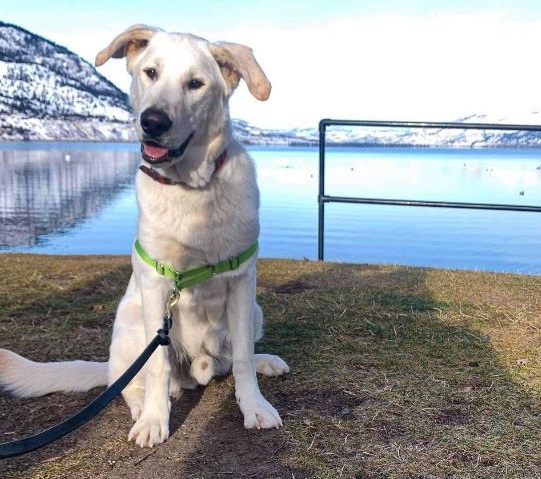
- DOG’S SIZE 22-24 inches tall
- WEIGHT 60-75 pounds
The Alaskan Malador breed has a Malamute parent and a Labrador retriever parent. As a hybrid, the Alaskan Malador isn’t recognized by the AKC.
This hybrid has a dense and waterproof double coat, but it provides less protection against the harsh Alaskan environment than purebred arctic dogs’ coats.
Alaskan Maladors are smart, patient, friendly, very trainable, energetic, athletic, good with children and other animals, and have a sweet temperament.
They need mental and physical stimulation. Alaskan Maladors need training and socializing when they are young because they are protective.
5. Alaskan Chinook
- DOG’S SIZE 22-26 inches tall
- WEIGHT 50-90 pounds
The Alaskan Chinook breed has a short coat of red gold, fawn, buff, white, black and tan, gray and tan, and black. They are protective, calm, devoted, affectionate, very trainable, patient, good with children and dogs, and known for their intelligence. The Alaskan Chinook barks a lot. These cuties are hard workers as well as great family dogs.
They were created by Arthur Walden of New Hampshire, who lived in Alaska at the time of the Gold Rush. He returned home and bred Mastiffs with Greenland Huskies to develop the perfect sled dog in the early 1900s.
The Chinook is one of the few breeds created in America. Speaking of sledding, many Alaskan dog breeds compete in the Iditarod.
Walden created Chinooks to have the power of freighting dogs and the speed of sled racers so they could do both. They are also experts at carting, obedience, agility, search-and-rescue work, and herding. They need exercise to stay in good shape (like the rest of us!).
Chinook is a Native American word for “warm wind.” Walden’s lead sled dog’s name was Chinook, and he named the breed after his dog.
The Chinook has battled extinction a couple of times but finally became an AKC-registered breed.
6. Alusky
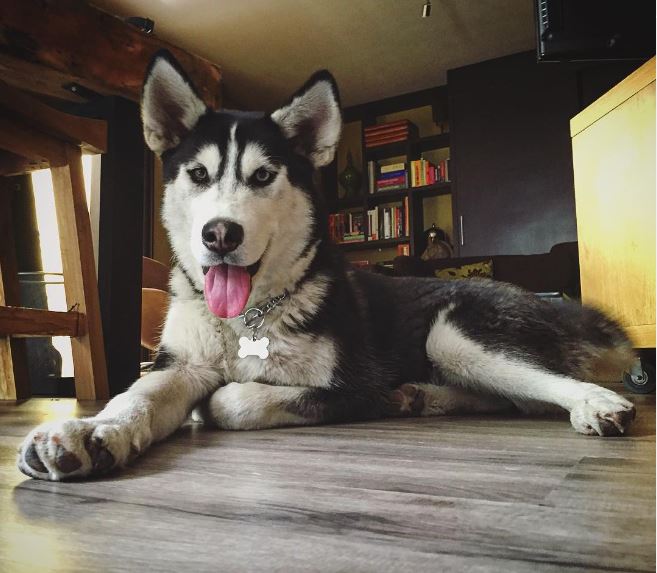
- DOG’S SIZE 20-26 inches tall
- WEIGHT 40-85 pounds
The Alusky breed is a hybrid between an Alaskan Husky and an Alaskan Malamute. Alaskan Huskies are fast-sled dogs, and Alaskan Malamutes are strong, endurance-sled dogs. The hybrid result is an active, athletic, playful, and adorable Alaskan dog breed.
Aluskies aren’t recognized by the AKC because they are a hybrid. They are known for howling. Aluskies can be in many colors, including gray, black, red, brown, tan, white, and cream.
This half-Alaskan Husky needs exercise and is loyal and trainable. Their parent breeds passed on the genes of kindness, people-loving, high intelligence, and energy.
They are good-natured and affectionate but need early socialization and training. Alluskies are Spitz-type dogs that mainly live in the Arctic. There are quite a few types of Huskies.
7. Malamoodle
- DOG’S SIZE 25-72 inches tall
- WEIGHT 65-120 pounds
It seems like it’s mandatory to cross every breed with a Poodle. The Malamoodle hybrid breed is a cross of two breeds: a Malamute and a Standard Poodle. They blow their thick and curly coat twice a year, so they aren’t as low in dander as other Doodles.
They are playful, affectionate, highly intelligent, easy to train, and even good for first-time owners. Mals are pack animals, so Malamoodles love kids.
Malamoodles are a hybrid that should be trained and socialized early because they inherited the stubborn gene from their Malamute parent. They aren’t an AKC-recognized breed because they are a mixed breed. They should be brushed several times a week to maintain a nice appearance.
8. Samoyed Malamute
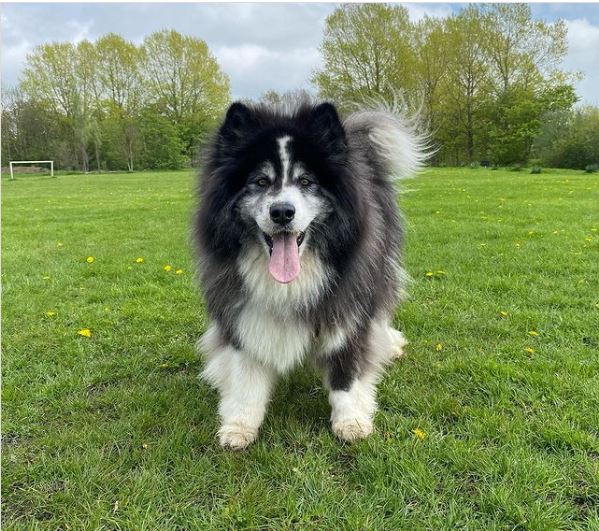
- DOG’S SIZE 20-25 inches tall
- WEIGHT 50-75 pounds
The Samoyed Malamute breed, a hybrid between a Samoyed and an Alaskan Malamute, is one of the fluffy and strong arctic breeds. Their double coat is usually white, cream, black, and gray.
These canines are friendly, playful, loyal, energetic, affectionate, good with children, and great family members. Samoyeds were multi-talented reindeer herders who kept their people warm at night and also pulled sleds.
They inherited the endurance of the Alaskan Malamute, and their Samoyed DNA makes them good herders. Like their working dog parent breeds, they need exercise and stimulation.
9. Greenland Malamute
- DOG’S SIZE 21.5-23.5 inches tall
- WEIGHT 66-70 pounds
The Greenland Malamute dog breed, also known as the Greenland dog, is gray, black, red, and gold with a medium-length coat. Greenland Malamutes are blessed with endurance, making them great sled dogs.
They also hunted seals and polar bears. They can handle extremely cold temperatures like -35 to -75 degrees Fahrenheit.
They are energetic, friendly, loyal, mentally and physically strong, affectionate, willing to please, and fast dogs. They can also be stubborn, so they need training and socializing from an experienced owner. They need exercise because they have a lot of energy. They are closely related to wolves.
FAQs
What Breed Is the Alaskan Dog?
The Alaskan dog breed is the Malamute.
Is a Husky or Malamute Bigger?
The Malamute is bigger than the Husky.
Why Is Alaskan Klee Kai So Small?
Alaskan Malamutes were bred down to create the Alaskan Klee Kai, a companion dog breed.
Is Malamute a Wolf?
According to Embark DNA, Malamutes are an ancient breed and score very high on wolf DNA. People interbred working sled dogs and wild wolves years ago. There are a bunch of wolf-dog breeds, each with a wolf-like appearance.
Final Thoughts
The Alaskan dog breeds are an adorable bunch of fluffy and strong hard workers. Many of the Alaskan dog breeds are large because of the vital work they did and do. Certain Alaskan breeds have been crossed in an effort to create better sled dog breeds as well as canines that perform other jobs.
Dogs from Alaska are rugged and have waterproof or water-resistant coats. They help people with many tasks. Whether herding, racing, hunting, hauling, or sitting in their person’s lap — every Alaskan dog breed has a job to do and the stamina to get it done right — while being loyal and loving.
We hope you enjoyed learning about the pure-breed Alaskan dogs and the hybrids.
Alaskan dog breeds, shaped by the harsh Arctic environment, are renowned for their strength, endurance, and thick coats. From the powerful Alaskan Malamute to the swift Siberian Husky and the relatively smaller Alaskan Klee Kai, these breeds offer a range of sizes and temperaments. While their historical roles included sledding and hauling, they now thrive as loyal companions and active family members. Potential owners should consider their high energy levels and need for consistent training and socialization. With proper care and attention, these magnificent dogs can bring joy and adventure to any home prepared for their unique needs.

